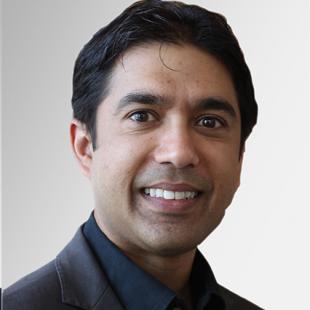Vivek Goyal received the M.S. and Ph.D. degrees in electrical engineering from the University of California, Berkeley, where he received the Eliahu Jury Award for outstanding achievement in systems, communications, control, or signal processing. He was a Member of Technical Staff at Bell Laboratories, a Senior Research Engineer for Digital Fountain, and the Esther and Harold E. Edgerton Associate Professor of Electrical Engineering at MIT. He was an adviser to 3dim Tech, winner of the 2013 MIT $100K Entrepreneurship Competition Launch Contest Grand Prize, and consequently with Nest Labs 2014-2016. He is now an Associate Professor of Electrical and Computer Engineering at Boston University.
Dr. Goyal is a Fellow of the IEEE and of the OSA. He was awarded the IEEE Signal Processing Society (SPS) Magazine Award in 2002, the IEEE Int. Conf. on Image Processing Best Paper Award in 2014, the IEEE SPS Best Paper Award in 2017 and 2019, and an NSF CAREER Award. Work he supervised won awards at the IEEE Data Compression Conf. in 2006 and 2011, the IEEE Sensor Array and Multichannel Signal Processing Workshop in 2012, the IEEE Int. Conf. on Imaging Processing in 2018, and the IEEE Int. Conf. Computational Photography in 2018, as well as five MIT thesis awards. He is a co-author of Foundations of Signal Processing (Cambridge University Press, 2014).
Abstract
ONE CLICK AT A TIME: PHOTON- AND ELECTRON-LEVEL MODELING FOR IMPROVED IMAGING
Using detectors with single-photon sensitivity enables lidar systems to form depth and reflectivity images at very long ranges, which has improved surveillance and reconnaissance capabilities. Initially, our interest was in exploiting inhomogeneous Poisson processes models and the typical structure of natural scenes to achieve extremely high photon efficiency through first-photon imaging and related methods. However, modeling at the level of individual photons does not merely give advantages when signals are weak. It is also central to withstanding high levels of ambient light and mitigating the effects of detector dead time, which ordinarily create high bias in high-flux imaging. Our sensor signal processing advances thus potentially improve lidar performance in settings with very high dynamic range of optical flux, such as autonomomous navigation. Furthermore, modeling at the level of individual incident particles and emitted secondary electrons leads to improvements in focused ion beam microscopy that apply uniformly over all dose levels.
Key related paper identifiers: 10.1126/science.1246775 10.1109/TSP.2015.2453093 10.1038/ncomms12046 10.1109/TSP.2017.2706028 10.1126/science.aat2298 10.1109/TSP.2019.2914891 10.1016/j.ultramic.2020.112948










